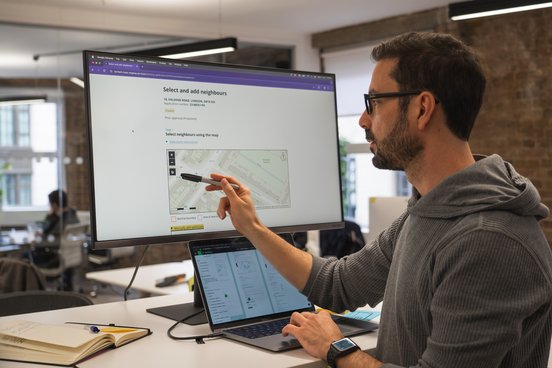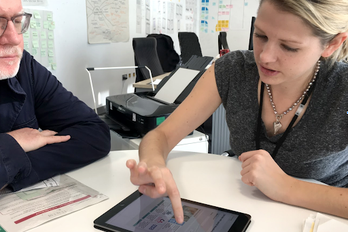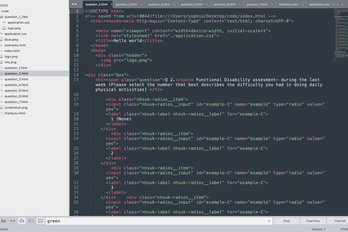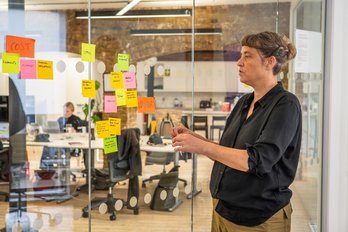At Unboxed we strongly believe in the value of designers and developers working closely together at every stage of the development process. To us, this seems obvious and intuitive, but it is surprising how many teams still follow the pattern of designers shaping the product or service in isolation, and then handing off their designs to a development team, who may or may not be co-located - or who may not even work for the same company.
Ben says: “Effective collaboration between these disciplines is essential for creating user-friendly solutions that are both practical and technically feasible. I’ve been working for some time as a developer on the Back office Planning System (BOPS), a user-centred platform which planning officers in local authorities use to evaluate and process applications. I work closely with the design team - and a recent example of a challenge we faced shows exactly why this is so important.
“When someone applies to build or change their property, one of the steps in the consultation involves informing neighbours who might be impacted by this work. Part of a planning officer’s job is to contact all the relevant residents nearby, and their current workflow meant that they had to add all these details manually, which was very inefficient and prone to error, especially for large consultation areas involving hundreds of addresses.
“Rather than diving into high-fidelity prototypes, I chose to collaborate early on with the design team to explore technically feasible solutions. This approach allowed us to understand all constraints and possibilities before development began, aligning design ideas with technical realities and avoiding unrealistic expectations.
“A key moment during this collaboration was when I shared the findings from my technical exploration into the Ordnance Survey Places API with the design team. By showing them an example of the raw JSON response and explaining the API endpoints we could query to retrieve multiple addresses, the team gained a clear understanding of the available data and its limitations. This shared knowledge led to more informed and practical design decisions that made the most of the available data, while staying within technical constraints.
“For example, we discovered that querying multiple addresses via a polygon search using the API was the most viable solution. This discovery directly influenced the design process, allowing the team to sketch out solutions that were not only practical but also technically achievable. This iterative approach improved communication, and made planning and development tasks more manageable.”





